Great Scone Debate: What Happens When People Talk Scones
TEATIME NOTES
Find tips, recipes, and articles to increase your delight and enjoyment of tea.
Great Scone Debate: What Happens When People Talk Scones
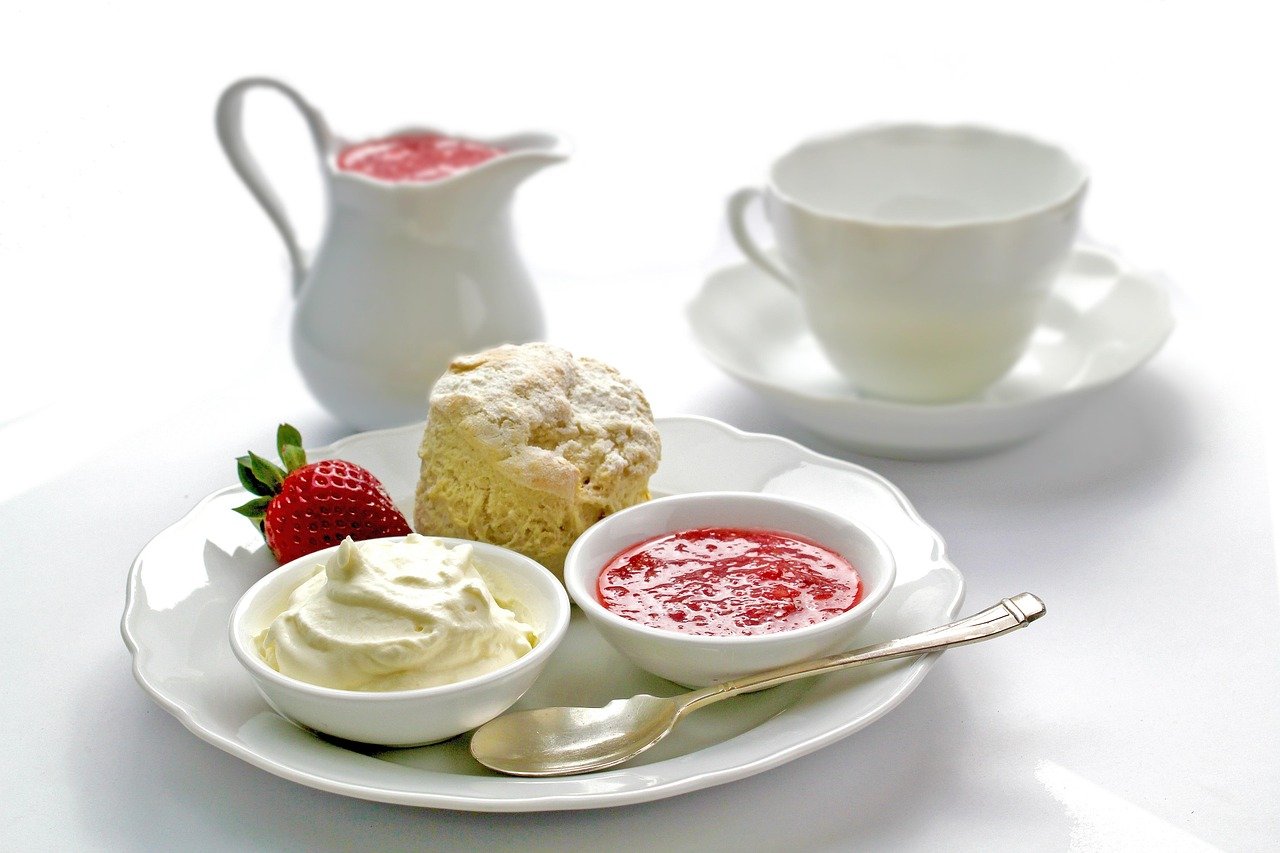
How to Eat a Scone the Best Way
Today is all about scones with jam and cream! You’re a fan of a good, authentic scone, but do you put your jam on first or your cream? How do you eat scones?
If you are obsessed with scones like we are, you’ve probably heard of the Great Scone Debate between Devon and Cornwall. And if you haven’t, you are in for a real sweet treat! Steep a cuppa and let’s dive into the British scone conundrum.
In Britain, there are very strong opinions about how you should dress your scone during a cream tea. Do you put the jam on first or the clotted cream on first? Does it even matter? — Yes! It absolutely does!
Before we get into the details, it’s good to have a little background. And having the knowledge will make it easier to choose a side. What cream tea is and how it started might have an impact on your opinion about who is right in the Great Scone Debate.
What is the History of Cream Tea?

In South West Britain, cream tea is quite the affair today — but how did it start?
Green tea wasn’t brought to Britain until the 17th century, and breakfast teas were invented even later. The first scones weren’t created until about the 1500s by the Scots. But the first sign of clotted cream might have appeared in the 11th century in Devon.
After the Vikings raided Tavistock Abbey in Devon, the monks in the town were so grateful to the workers who helped rebuild the town. As a thank you, the monks served the workers bread with a thick and slightly sweet clotted cream — or Devon cream. The snack was so popular that the monks continued serving it to travelers.
Jam wasn’t served with clotted cream in the beginning because jam was rare and expensive. Sugar — one of the main ingredients of jam — was a commodity set aside for the wealthy. It wasn’t until later that sugar became available to the general population, and jams became a staple.
After the construction of the railway, the 1850s tourist boom brought people to Devon. One of the most sought-after treats at the time was the cream tea — and it’s a lot like the one you know today. It inspired tea rooms to sprout up all over Britain and now we have an abundance of scones with jam and cream. Huzzah!
What is Cream Tea Today?

In South West Britain, cream tea is enjoyed as an afternoon pick-me-up in between lunch and dinner. It can be a rather casual affair — about as casual as grabbing a cup of coffee in America. It’s also a fun experience for tourists who are traveling through the South West.
During a cream tea, a robust pot of black tea — English breakfast or Earl Grey — is enjoyed alongside a scone with some clotted cream and jam. But, it’s very different from the all-too-common afternoon tea.
Afternoon tea is a larger meal featuring scones, sweets, sandwiches, and savories. While afternoon tea does include scones, cream tea serves only scones with jam and cream. The point of cream tea is to highlight the clotted cream as the star of the show — hence the name “cream” tea.
What is Clotted Cream?

Clotted cream also goes by the names Devonshire cream, Cornish clotted cream, scalded cream, and clouted cream. It’s a thick, high-fat cream made by heating whole-fat milk or cream in a shallow pan until it separates. The curdles reach a thick and buttery consistency and are used as clotted cream.
The most authentic clotted cream is made in Devonshire or Cornwall. It’s a light yellowish color with a mildly sweet flavor.
This unpasteurized cream is not normally available in the United States. But, there are specialty grocery stores that might serve a pasteurized version of clotted cream. If you want the real stuff, you might have to go outside of the country and experience authentic cream tea in Britain.
What Kind of Jam Do You Use for Cream Tea?

Strawberry is the most traditional jam for cream tea. There is no debate about this. In the world of scones, strawberry jam is queen.
That’s not to say you can’t enjoy other flavors and toppings if you want to. Other popular jam flavors are raspberry, black currant, marmalade, and more.
In the winter months, it isn’t unheard of to smear your scone with hazelnut chocolate spread. Lemon curd is also a delightful citrus topping. But for traditional cream tea, strawberry jam is the way to go.
What Kind of Scones Do You Serve With Cream Tea?

Plain scones, raisin scones, or currant scones are the most popular. Golden raisin scones were supposedly preferred by Queen Elizabeth herself, and they were frequently made at Buckingham Palace.
Scones are traditionally cut round and glazed with an egg wash. They are only slightly sweet.
British scones are very different from the scones you find in America. Scones at coffee stores all over the United States are usually stuffed with fruits and glazed with sugar. American scones are very sweet!
British scones might look like American biscuits, but they don’t have nearly as much butter as biscuits.
How Do You Eat a Scone?

Your scone should be served warm. It should be delicate enough that you can separate it in half with a twist of your hand. You should never cut your scone in half with a knife if you can prevent it.
When it comes to the Great Scone Debate, cream tea ingredients are all agreed upon: traditional scones, strawberry jam, and clotted cream.
But why do Devon and Cornwall disagree about how to eat scones with jam and cream?
What is the Great Scone Debate?
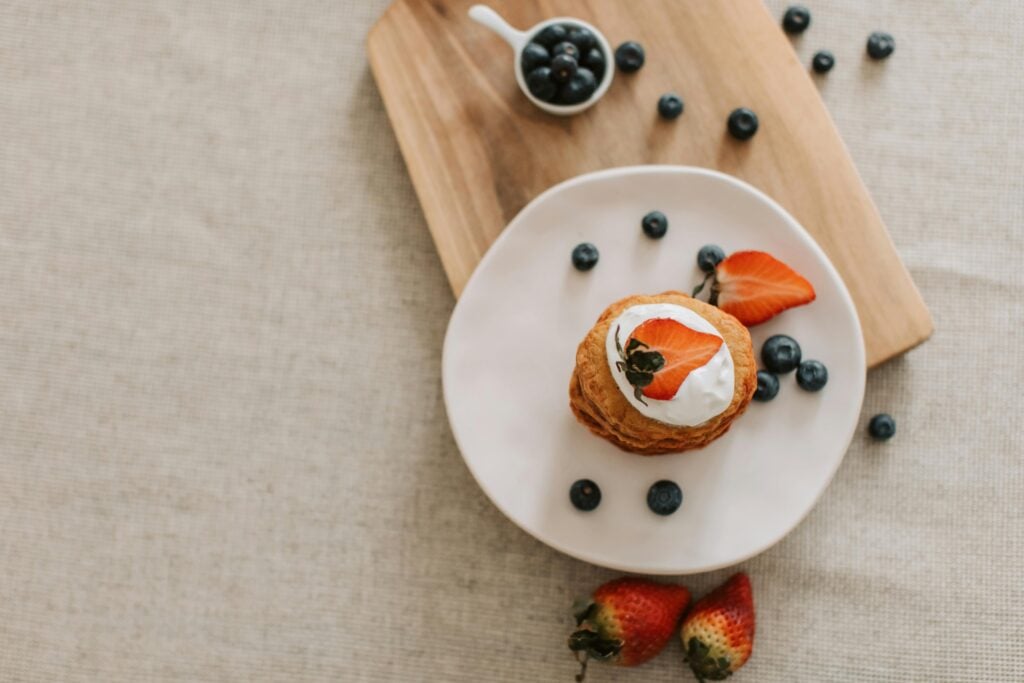
It’s also known as the “Jam First vs. Cream First” debate or the “Cream Tea” debate. For what seems like forever, Cornwall and Devon have stated their cases in the most controversial debate in scone history.
What is the proper way to eat a scone? Everyone is in agreement that the scone should be split in half. But both Cornwall and Devon feel very strongly about dressing your scone with cream and then jam — or jam and then cream.
You would think that because of the history of cream teas in Devon, they would ultimately win this debate. But there are many people who disagree with the methods of scone consumption in Devon.
Why do Devons believe how they do? Probably because of basic history and the fact that clotted cream started in Devon itself. But they have some pretty good arguments outside of that.
What is the Devon Way of Scones?

Clotted cream was the first cream tea ingredient invented in the 11th century — far before scones, affordable jam, and before tea itself made its way to Britain.
When jam became available, it was still a rare ingredient that was used only sparingly in the region. This might be the reason Devonians dress their scones as they do today.
When Devonians ate scones, they spread a generous amount of clotted cream on the scone first. It was an ingredient that was widely available to everyone.
Then they dalloped the cream with a small amount of expensive jam. This formula for scones with jam and cream stuck ever since.
There’s the added point that the butter-like consistency of clotted cream allows more cream to sit on the scone when you spread it on first. Devonians treat cream more like butter, and you would never put jam on your toast before butter, would you?
So why do the Cornish disagree with this Devonian logic?
What is the Cornwall Way of Scones?

Cornish people are firm in their belief that the best way to eat a scone is jam first and clotted cream second.
When you put the jam onto a warm scone, it might help create a barrier to prevent the cream from melting too quickly. They also believe you shouldn’t be skimpy with your jam — the more the merrier!
They think you can taste the delicate flavor of the cream more when it’s on top of the jam. According to the Cornish, it’s also easier to spread an abundance of jam on your scone first and then add the cream on top.
The most important factor is that they don’t believe in treating your clotted cream like butter. They believe clotted cream should be enjoyed on top of your scone — just like whipped cream is enjoyed on top of dessert. This method makes so much more sense to the Cornish.
Cornish people also like to note that in London, they are jam-first types. And even the Royals at Buckingham Palace put the jam on their scones before the clotted cream — or, at least that’s what Queen Elizabeth used to do, and everyone else followed suit.
Are You With Devon or Cornwall?

Which side do you think is right? When you eat a scone, do you put an abundance of jam on your scone first, like in Cornwall? Or do you pile on the clotted cream like they do in Devon?
No matter your personal preference for scones with jam and cream, we can all agree that cream tea is one of the pinnacles of tea-time happiness. To make your cream tea even more spectacular, seek out quality teaware that enhances the pure flavor of your tea and fully complements your scones.
Teabloom is your home for handcrafted, decadent, and affordable teaware that matches your personal aesthetic. Find your new favorite tea mug or tea set and explore USDA Certified Organic Teas today for a decadent and beautiful tea experience.





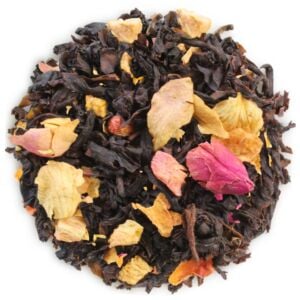





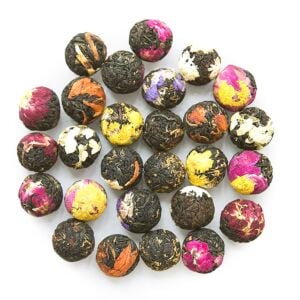


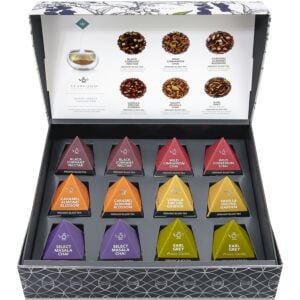
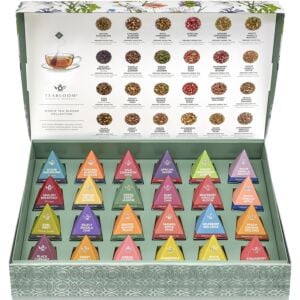













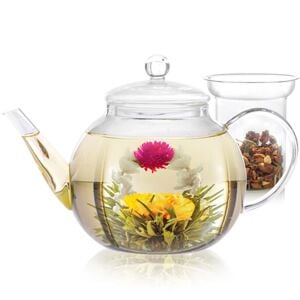


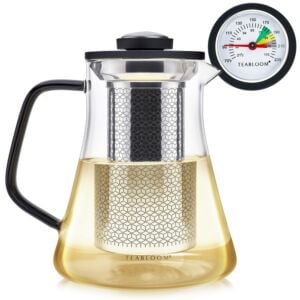
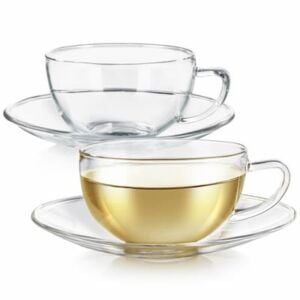


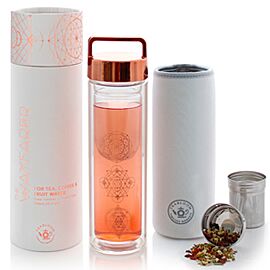










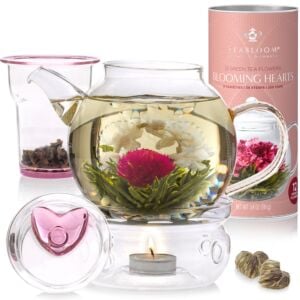





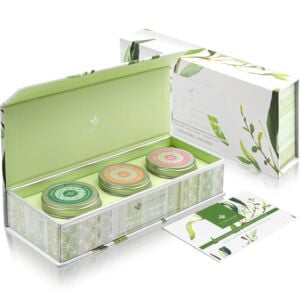




































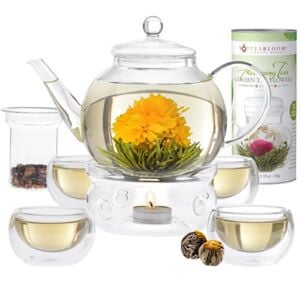

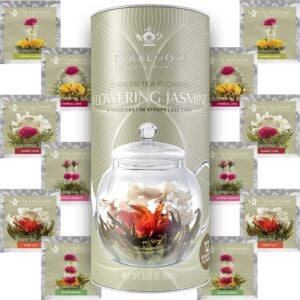












Share your thoughts